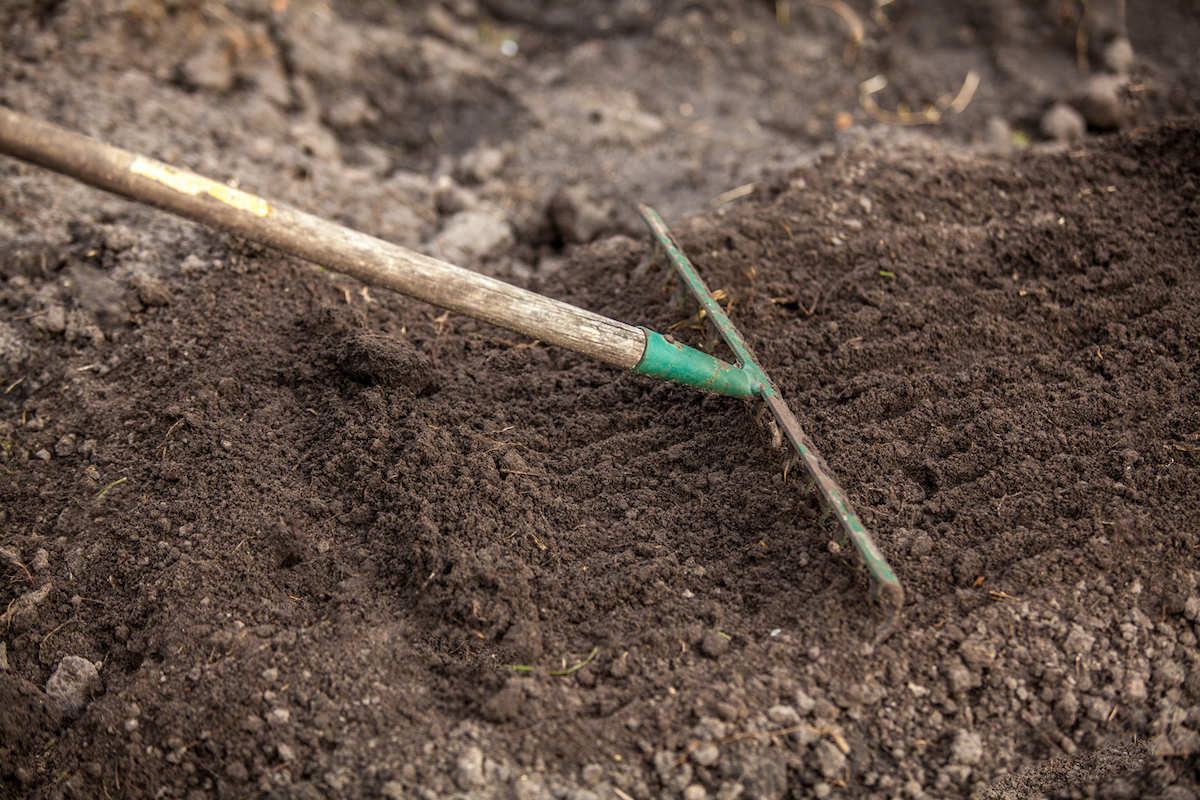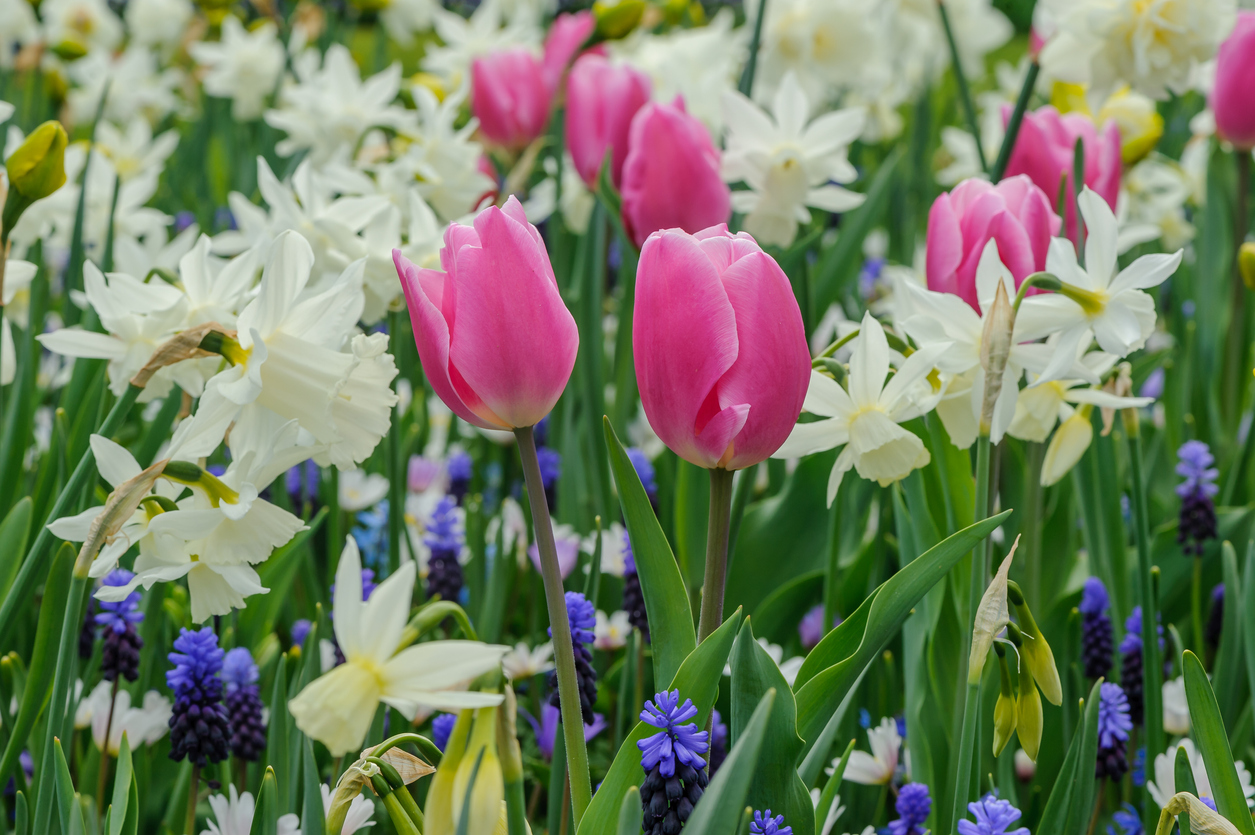

We may earn revenue from the products available on this page and participate in affiliate programs. Learn More ›
Bone meal is sometimes sold as a livestock feed additive or a supplement for people. However, in the gardening world, it’s most often used as the phosphorus-contributing element in organic fertilizers.
Bone meal also may be marketed on its own as a plant food, touted to encourage rapid root growth in spring-flowering bulbs. Unfortunately, due to its less-than-beneficial effect on mycorrhizal fungi, the disadvantages of bone meal fertilizer may outweigh the advantages. Before we get to that, though, just what is bone meal?
What Is Bone Meal?
Organic bone meal simply is the ground bones of livestock or, in fish bone meal, fish. Generally, those bones will have been cleaned of fat and steamed before being ground. This process can remove trace elements such as magnesium and zinc originally present in bone meal, leaving mostly phosphorus and calcium, as well as some nitrogen.
Reasons to Use Bone Meal in the Garden
Whether bone meal for plants is beneficial depends on whether your soil really needs it. Some plants show signs that they need the phosphorus or calcium that bone meal provides, but conducting a soil test is always the surest way to know.
Bone meal supplies phosphorus to promote root growth and flowering.

Phosphorus, the middle number in garden fertilizer ratios, has long been considered essential for promoting both root growth and flowering in plants. So, bone meal for roses may be a good idea if bushes exhibit the American Rose Society’s list of phosphorus deficiency symptoms: “Older foliage drops without turning yellow. Leaves are dull gray-green in color. Buds slow to develop; leaf edges of older leaves may cup down.” In other plants, look for unnaturally dark older leaves tinged with violet and unnaturally small new leaves.
However, except for some depleted agricultural fields, most land in the U.S. is not deficient in phosphorus. Adding more may simply contribute to polluting runoff. Therefore, you’ll want to test your soil first to make sure that it really is low in phosphorus and to determine its pH. Highly alkaline or highly acidic soils often bind phosphorus rather than making use of it.
Bone meal supplies calcium for strong plant cells.
Bone meal for tomatoes sometimes is recommended to gardeners whose plants have produced fruits with blossom end rot attributed to calcium deficiency. That deficiency prevents the tomato fruits’ cell walls from developing properly, causing sunken dark spots on their undersides. Bone meal might help in cases where the rot actually is due to a lack of calcium in the soil.
In many cases, however, the problem lies instead with the plants not taking up available calcium properly due to overwatering or underwatering. Again, a soil test should help determine whether plants actually need more calcium or just a more consistent watering schedule. Other signs of calcium deficiency include crinkled leaves with unnaturally dark veins accompanied by chlorosis (yellowing between veins), brown spots on leaf edges, and shriveling plant tips.
RELATED: Plant Food vs. Fertilizer: What’s the Difference?
Reasons Not to Use Bone Meal in the Garden
Even organic fertilizers can do more harm than good if they aren’t actually necessary. So protect the environment and your own budget by avoiding the overfeeding of garden beds, even with bone meal.
Too much phosphorus suppresses plants’ own natural phosphorus-gathering propensities.
According to Linda Chalker-Scott, an extension horticulturist at Washington State University, plants in low-phosphorus ground make acids that interact with mycorrhizal fungi to naturally draw phosphorus from the soil. “If phosphorus levels are too high, however, the roots do not exude the organic acids and mycorrhizal connections do not form,” she writes. “This forces the plant to put more resources into root growth to compensate for the lack of mycorrhizae. So in a sense phosphorus will increase root growth—but at an added cost to the plant.”
She goes on to emphasize, “Phosphorus, from bone meal or other sources, does not ‘stimulate’ plant growth; it is only a mineral, not a plant growth regulator.”
Bone meal attracts pets and pests.

The odor of bones naturally will attract a variety of animals, including dogs, raccoons, and skunks. Those animals may then dig up your bulbs or young plants in their attempts to get at the meal.
Although bone meal isn’t usually considered toxic, the University of Rochester Medical Center warns that it is “high in lead” and “may also have high mercury levels.” So you don’t want your dog or your neighbor’s dog attempting to eat it. If you live in an area with a high population of pets or wildlife pests, it’s a good idea to choose an alternative organic phosphorus source such as colloidal soft rock phosphate.
When and How to Apply Bone Meal Fertilizer
According to the organic fertilizer company Espoma, you should apply bone meal at the time you set out your plants or bulbs “at a rate of 10 pounds per 100 square feet, raking it well into the soil.” In subsequent years, you can use it once in spring and once again in autumn. For shrubs and trees, give 1 pound each to smaller specimens, 2 pounds each to larger ones. For potted plants, mix in no more than a heaping tablespoon per pot.
However, as was previously mentioned, you should apply phosphorus fertilizers only to soils that show a deficiency of the mineral and cease applying them once that deficiency has been corrected.
RELATED: What Is Blood Meal and How Can I Use It in My Garden?
Plants That Benefit From Bone Meal Fertilizer

Below is a list of plants for which bone meal traditionally has been recommended. Keep in mind, however, that phosphorus fertilizers can be harmful to a few phosphorus-sensitive species—mostly Australian varieties—such as banksias, grevilleas, and hakeas, as well as proteas. If you plan to grow any of these plants, check to determine whether they are among the sensitive types before you attempt to fertilize them.
Traditionally, bone meal has been recommended when planting or feeding the following plants. Gardeners may add it if the soil is deficient in phosphorus:
- Crocus
- Daffodil
- Hyacinth
- Rose
- Tomato
- Tulip
FAQs About Bone Meal for Plants
If you prefer just the bare bones about bone meal, consult the questions and answers below. If you would prefer a little more meat on those bones, you may want to peruse the article above too.
No, it can’t. Avoid applying bone meal to plants that are especially sensitive to phosphorus, such as plants in the genera Protea, Banksia, and Grevillea.
Signs of phosphorus deficiency include unnaturally dark older leaves sometimes tinged with blue or violet and unnaturally small new leaves.
Although bone meal generally isn’t considered toxic, it reportedly contains high levels of lead and possibly of mercury.
No, bone meal doesn’t burn plants in the way high-nitrogen fertilizers sometimes do.
Yes, excessive amounts of phosphorus can cause polluting runoff. Avoid using phosphorus fertilizers in your garden unless they are necessary.
Yes, liquid bone meal is often used to provide phosphorus to plants grown hydroponically.
RELATED: How Soil Amendments Can Improve Your Garden
